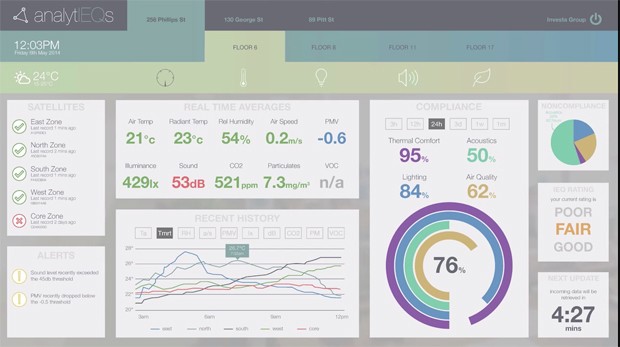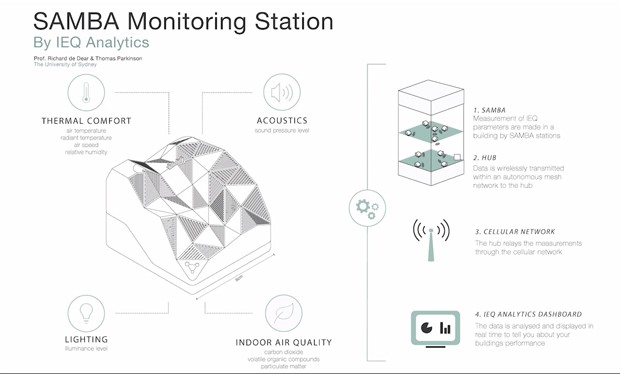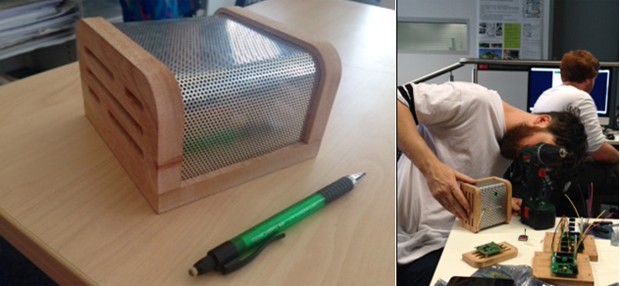Want to measure and improve the indoor human comfort factor of office buildings? A compact, box-shaped device developed by a group of researchers from the University of Sydney’s Indoor Environmental Quality (IEQ) Lab could do it for you.
Although unassuming at first glance, SAMBA is a highly sophisticated unit that is able to measure the key factors that have been shown to have the greatest impact on an office worker’s health, comfort and productivity – air temperate and speed, humidity, light, sound and air pollutants.
It is built on sensor technology that relays the information back to a central computer for further analysis using its own network frequency, with the data processed online in real time on a web-based dashboard that building operators can monitor.

SAMBA was first developed by PhD student Tom Parkinson with his brother and IEQ research assistant Alex Parkinson, under the leadership of Professor de Dear, Head of Architectural Science at the University of Sydney. Ideally, multiple units of SAMBA would be placed in an office to capture the indoor environmental factors in different locations, allowing it to act as “building’s eyes, ears, nose and skin”.

“In NSW, more than 90 per cent of office blocks and about 50 per cent of homes now have air-conditioning. Clearly the continuing transition towards an energy-efficient, low-carbon economy will have an impact on comfort levels within built environments. But what impact this will have on the people for whom buildings exist, is what we are interested in measuring,” says Professor Richard de Dear.
“IEQ however, is a complex science. SAMBA will help to make sense of the science by giving companies the information or evidence to understand how efficiently and effectively their building is operating for the comfort of its people.”

SAMBA was named People’s Choice winner of the ‘Weapons of Mass Creation’ innovation award at the Green Cities 2015 conference in Melbourne. It was also shortlisted for the Property Council of Australia’s 2015 Innovation & Excellence Awards to be announced in Sydney on 1 May.
It is hoped that the device, which has been produced at a relatively low cost, will shift IEQ up in the industry’s set of priorities for sustainable buildings.
“The way in which the industry has managed indoor environmental quality up until this point has been restricted by technology and costs. Probably the dimension of sustainable buildings that we have paid least attention to in the last decade or so would be the indoor environmental quality, yet most of the energy that a building consumes is related to the delivery of IEQ; to the occupants of the building,” says Professor de Dear.
“What we now have is a revolution in technology…[and] I can envisage many more parameters being sensed at an affordable price, continuously by a device like this.”

